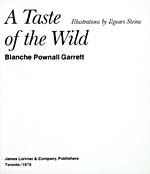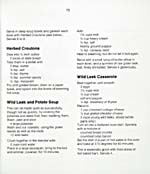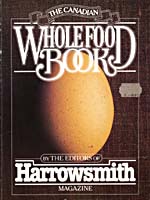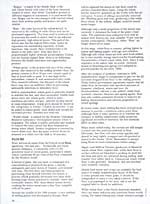|
By the 1970s, North Americans were becoming addicted to the ease of cheap, fast food. The continued pull in the opposite direction eventually resulted in an international movement called, with a touch of humour, "Slow Food." Originating in Italy, the movement has spread around the western world. Its aim is to encourage cooks to take the time to prepare meals themselves using fresh, local foods (whenever possible), and to enjoy meals at a leisurely pace in the company of friends and family.
|
 Source
Source
|
|
 Source
Source
|
|
 Source
Source
|
|
Blanche Pownall Garrett. A Taste of the Wild. Illustrated by Ilgvars Stein. Toronto: James Lorimer, 1975
|
Making use of foods from the countryside, from amaranth and arrowhead to sumac and violets, Garrett's book offers the reader recipes that "can transform an ordinary meal into a memorable feast, with just a taste of the wild" (p. 2).
|
 Source
Source
|
|
 Source
Source
|
|
 Source
Source
|
|
The Canadian Whole Food Book: A Guide to New Age Sustenance. By the editors of Harrowsmith Magazine. Camden East, Ont.: Camden House, 1980
|
The open bins pictured here in a health food store of the 1970s would soon require covers; serving tongs would be added, and other protections against impurities would gradually become part of the health food revolution. Harrowsmith, the magazine, was a major influence in the move to a new, healthier diet.
|
 Source
Source
|
|
|
Anne Lindsay. The Lighthearted Cookbook: Recipes for Healthy Heart Cooking. Toronto: Key Porter Books, 1988
|
By the 1990s, healthy eating was on everyone's mind -- this in spite (or perhaps because) of the fact that eating fast food on the fly was beginning to be a way of life, and an unhealthy one for many. Anne Lindsay, with a number of titles in both French and English, was a lifesaver -- literally.
A manifesto in which EarthSave Canada aims to educate Canadians about good nutrition and the value of a plant-based diet.
|